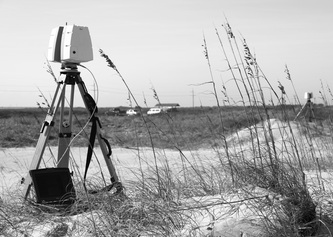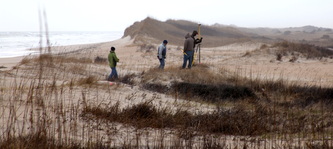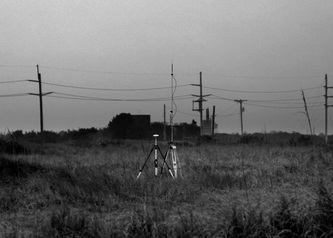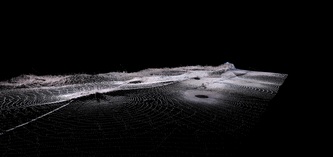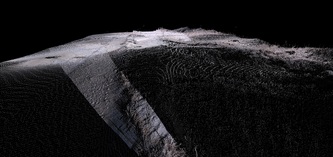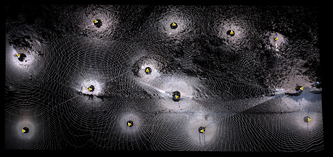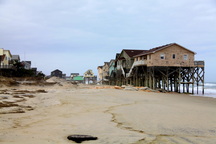
In March, 2011, I traveled to the Pea Island national wildlife refuge to terrestrial laser survey a section of overwashed dune in an attempt to establish a long term overwash monitoring site within the Cape Hatteras National Seashore. As I have detailed previously, overwash is an important aspect of barrier island landward migration and thus an important area of research along the Outer Banks, which is a barrier island. This is especially true if you also consider the amount state owned infrastructure and privately owned houses which are currently impacted or have the potential to be soon impacted by barrier island landward migration.
Methods

In addition to the laser scan survey, a RTK-GPS base station and rover unit provided: a coarse resolution survey of the site for comparison with laser scan data; ground-truthing in areas of dense vegetation; and geo-referencing capabilities for the laser scan survey.
Discussion
GPS points were surveyed in areas where the vegetation was too dense for the laser scanner to penetrate. The laser scanned vegetation points will then be replaced by the GPS points producing a more accurate digital terrain model than is possible by only using laser scanning or GPS by themselves.
Cyclone TOPO II has a ground finding function which climbs from point to point and classifies points as ground, or non-ground points (it deletes the points), based on their elevation in relation to surrounding points. A digital terrain model free of vegetation is currently being processed...
References
Cabanes et al. “Sea Level Rise During the Past 40 Years Determined from Satellite and in Situ Observations.” Science 294 (2001): 840-842.
Gornitz, V., S. Lebedeff, and J. Hansen. “Global Sea Level Trend in the Past Century.” Science 215.4540(1982): 1611-1614.
Riggs, Stanley R., and Dorothea V. Ames. Drowning the North Carolina Coast: Sea Level Rise and Estuarine Dynamics. Raleigh: North Carolina Sea Grant, 2003.
